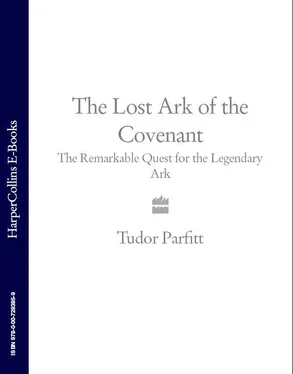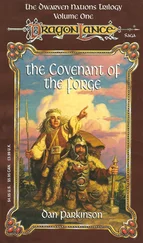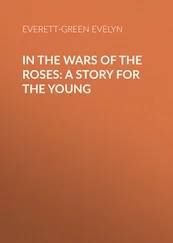As he put it: ‘No peace will ever come to the Middle East until both sides - Jews and Muslims - re-orient their spiritual relationship. We need some document from the past which could allow us to put conflict aside and respect each other!’
And today, it seemed, he had found that document.
At first glance it appeared to be a letter from the Prophet. The astonishing thing about it was that it set out not to vilify and condemn the great enemies of Islam - the Jews - but to praise and defend them. In fact, the Sons of Israel, the Banu Israil, as they are called in the Quran , are lauded to the skies.
He explained to me that Muhammad had never, ever had the idea of trying to create a new religion. He wanted simply to introduce the older faiths of Judaism and Christianity to the polytheistic people of the desert. The original direction to which Muhammad’s first disciples prayed - the qibla - was actually towards Jerusalem. It was only after the Jews of Medina - one of the oasis towns near Mecca - proved to be disloyal and fought against him that he turned against the Jews and started to pray in the direction of Mecca.
‘What’s this got to do with changing the world?’ I asked.
‘Everything, my friend, everything. Yo u could say that the Jews’ disloyalty to the Prophet was the beginning of the conflict between Islam and the West. Yo u know the Middle East scholar Bernard Lewis?’
‘Yes, he used to teach at SOAS.’
‘Lewis calls this “the clash of civilizations”. This was the great fissure between the cultures.’
‘Yes,’ I acknowledged, ‘that is true in a way.’
‘But just listen! What I’ve got here could easily reverse all that. That’s why I wanted to meet you. I need you to authenticate it. This manuscript gives a radically new perspective on what the Jews of Medina really got up to. It’s explosive. Muslims could soon be joining Jews and even Christians in prayer. Can you imagine that? They could all be praying together towards Jerusalem. Praying in the same direction is the first step to thinking in the same direction.’
Reuven’s eyes were shining with the splendour of this vision. ‘This document is like a news broadcast from ancient times,’ he continued, ‘from the time these troublesome religions were spawned - a tattered fragment from the past that will permit us to put aside our conflict and actually try to love each other. Armageddon could be postponed for a century or two!’
This was the gist of the document he held in his hand: Muhammad swears in the letter that it was the Jews of Medina and the other oasis towns of Arabia who had always come to his aid in his many battles against the heathen tribes of the desert. The Jews were even ready to desecrate their holy Sabbath to help him. They never left his side. They never betrayed him. During a single bloody campaign, the Jews killed over 20,000 heathen enemies of the Prophet: 7000 knights, 7000 regular horsemen, and 7000 foot soldiers.
‘ This is what the Prophet actually promised the Jews,’ declared Reuven reverently, raising one finger for emphasis. ‘Not centuries of contempt and persecution!’
‘Just listen.’ He put on a pair of reading glasses, scrutinized the document and read aloud. ‘“O men of the Children of Israel, by Allah I shall reward you for this…I shall grant you my protection, my covenant, my oath and my witness for as long as I live and as long as my community shall live after me, until they see my face upon the Day of Resurrection.”
‘Did you hear that?’ he asked, his voice suddenly shrill, thrusting the document in my face and revealing an immaculately laundered cuff. ‘If the Muslim world knew about this, they would change their attitude to Israel overnight! There’d be no more Arab-Israel wars! No more terrorist attacks!’
Unfortunately, there was more to the letter than met the eye. It was probably quite old, I could see that. The body of the text was in Arabic and there was a short introduction in Hebrew. I knew something about Hebrew palaeography - the study of the form of ancient writing - and I could see this was a medieval Hebrew Yemenite script. This much was genuine.
Then I recalled that once in the Yemen I had seen an almost identical document in the home of an antiquarian in Sana’a, the capital of the Yemen. It was called Dhimmat al-Nabi (The Protection of the Prophet) and was an ancient Jewish fabrication, an old forgery, which the Yemenite Jews had created to counter the animosity of their Muslim neighbours. There was no Jewish community in the Muslim world quite as wretched and persecuted as the Jews of the Yemen. They needed all the help they could get. However, this document would not persuade many Muslim scholars to turn their received opinions upside down. It would not change the world.
‘It’s a shame,’ I said, ‘but it is a forgery. A very old forgery.’
A yellow hamseen wind was blowing in from the desert. It was stiflingly hot. Reuven’s face fell when I gave him my assessment of his document, and he grew silent. He just sat there grimacing, rubbing the side of his head where he had been grazed by an Egyptian bullet in the last of his wars.
Had it been genuine, the document he had just shown me could have served this purpose pretty well.
‘Are you absolutely sure it’s a forgery?’ he asked trying to keep the disappointment out of his voice.
‘Quite sure,’ I replied flatly.
One cold, damp Jerusalem evening, some months later, we were walking back to my house in the Old City. Reuven had just flown in from Miami. He was suntanned and exquisitely dressed as usual, but he seemed agitated and I wondered what was troubling him. We had just passed through the Jaffa Gate, one of the main entrances into the walled city of Jerusalem, when he said, ‘Redemption. That’s it, redemption.’
‘What do you mean?’
He said nothing. We walked silently down the alley leading to the Armenian Quarter. After a few minutes he turned to me and murmured, ‘Redemption is what it is all about. I think I have found what I have been looking for. I now know what to do.’
‘You’ve not bought another ancient document from your dealer chum, have you?’ I asked in disbelief.
Stroking his beard, he smiled.
‘I have found it.’
‘Found what?’ I asked.
‘You’ll see,’ he said. ‘Wait until we get to your place.’
We passed Zion Gate, another of the historical entrances to the city, and walked in the shadow of the medieval walls towards the Western Wall, one of the great retaining walls built by Herod the Great to enclose the area of the Temple, and sacred to Jews ever since.
It had been a bitterly cold winter and was close to freezing when we arrived back at the house. I lit the Friedman paraffin stove in the study and put a match to a pile of olive wood in the sitting-room grate.
Finally when we sat down, he could no longer contain himself.
‘I think that I have found what I have been looking for,’ he announced quietly. ‘I think the solution is the Ark of the Covenant.’
We talked late into the night, huddled around the fire, drinking Israeli 777 brandy. He started by telling me about the efforts going on throughout the world to locate the ancient Temple treasure in Jerusalem. He explained the global religious importance of the Ark and its deep significance for mystics, kabbalists, and freemasons. He explained the history of the Ark as the Bible relates it.
The Ark had been made at God’s command shortly after the exodus of the Jews from Egypt around 1200 BC. It was essentially a coffer containing the tablets of the law which God had given to Moses on Mount Sinai and was believed to be the home of the Israelites’ invisible God. It was placed in a tentlike sanctuary called the tabernacle and could only be approached by priests of the tribe of Levi. The Ark punished by fire those that disregarded the strict rules which governed the way it should be treated. It was carried before the Israelites as they advanced through the desert and was said to have generated some kind of energy which blasted a dry path across the River Jordan.
Читать дальше












